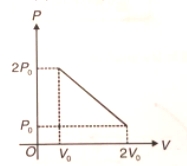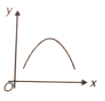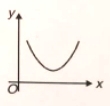A ball is dropped vertically from a height \(h\) above the ground. It hits the ground and bounces up vertically to a height of \(\frac{h}{2}\). Neglecting subsequent motion and air resistance, its velocity \(v\) varies with the height \(h\) as:
[Take vertically upwards direction as positive.]
| 1. |  |
2. |  |
| 3. |  |
4. |  |
The graph of displacement time is given below.
Its corresponding velocity-time graph will be:
| 1. |  |
2. |  |
| 3. |  |
4. |  |

1. \(2P_0 - \frac{P_0V}{V_0}\)
2. \(3P_0 - \frac{P_0V}{V_0}\)
3. \(P_0 - \frac{P_0V}{V_0}\)
4. \(4P_0 - \frac{P_0V}{V_0}\)
If slope of curve is first positive, then zero and after that became negative, so best represented of following graph which satisfied above condition
1. 
2. 
3. 
4. 
Find sin 5
1. 0.087
2. 0.078
3. 0.056
4. 0.039
Find the value of sin 15
1.
2.
3.
4.
Find maximum and minimum value of y = 3sinx + 4cosx
1. 5 and -5
2. 3 and -3
4. 4 and -4
4. None of the above
Find the roots of equation
1.
2.
3.
4.